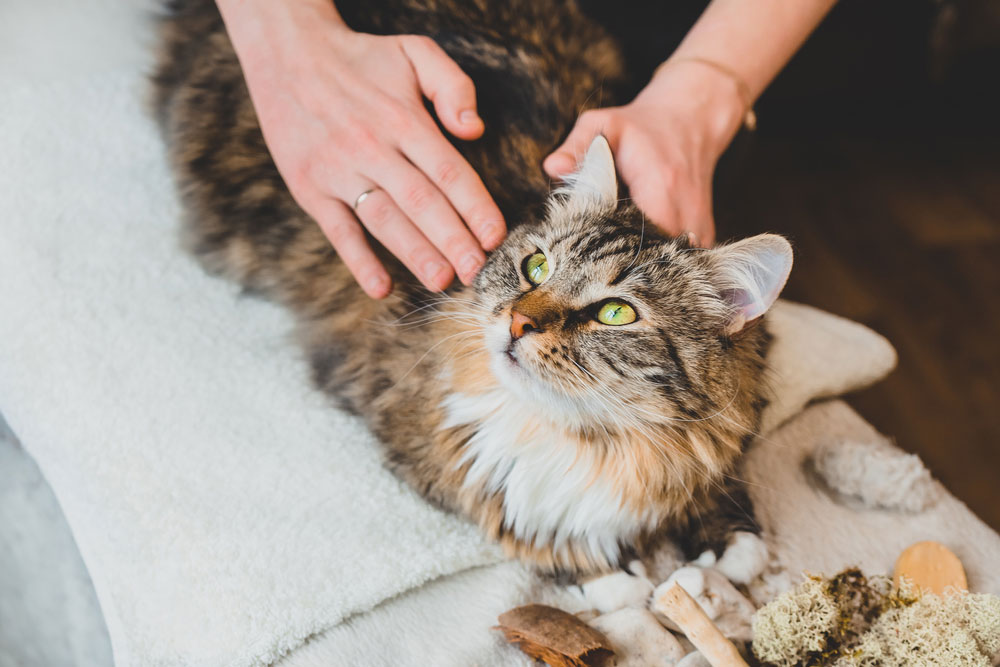Caring for Pets with Osteoarthritis: A Complete Guide for Pet Owners
If your pet has started slowing down, hesitating on stairs, or avoiding their usual favorite activities, it may not just be age—it could be osteoarthritis.
Osteoarthritis (OA) is one of the most common sources of chronic pain in dogs and cats, especially as they age. And because pets instinctively hide discomfort, the signs can be subtle—until one day, they’re struggling to stand up, reluctant to play, or sleeping more than usual.
At Stanton Pet Hospital, we know how heartbreaking it can be to see your pet in pain. But we also know this: with early detection and a personalized treatment plan, most pets with arthritis can continue to live active, happy lives.
This guide walks you through what osteoarthritis looks like, how to manage it at home, and what veterinary treatments are available to improve your pet’s quality of life.
What Is Osteoarthritis in Pets?
A Progressive Joint Disease
Osteoarthritis is a degenerative condition in which joint cartilage wears down over time, leading to pain, inflammation, and decreased mobility. While often associated with aging, it can also occur earlier due to:
- Joint injuries
- Abnormal joint structure (like hip or elbow dysplasia)
- Obesity
- Genetic predisposition
Learn more from the AAHA Mobility Matters Guide.
Who’s at Risk?
- Large-Breed Dogs: Labrador Retrievers, German Shepherds, and Golden Retrievers are particularly vulnerable.
- Senior Cats: Cats hide discomfort well, but arthritis is surprisingly common in older felines.
- Overweight Pets: Extra weight places additional strain on joints, accelerating cartilage breakdown.
- Pets with Past Injuries or Surgeries
More information: Arthritis and Degenerative Joint Disease in Cats – iCatCare
Recognizing the Signs of Arthritis in Dogs and Cats
Dogs May Show:
- Limping, especially after rest or during cold weather
- Stiffness or trouble getting up
- Slower pace on walks or decreased interest in play
- Hesitation with stairs or jumping
Cats May Show:
- Reduced jumping or climbing
- Neglected grooming or matted fur
- Sleeping in new, lower spots
- Increased irritability or withdrawn behavior
How Vets Diagnose Osteoarthritis
What to Expect During an Exam
Your veterinarian will assess:
- Your pet’s gait and range of motion
- Joint pain or stiffness on palpation
- Behavior or activity changes you’ve observed
Diagnostic Tools
- X-rays to detect bone changes or joint narrowing
- Advanced imaging (MRI/CT) for complex cases
- Bloodwork to rule out other conditions
Preventive Testing for Senior Pets – Zoetis
Treatment Options for Pet Arthritis
Pain Relief and Anti-Inflammatory Medications
- NSAIDs: Often the first line of treatment, but must be used under veterinary supervision.
- Monoclonal antibodies: A new option for dogs with OA that targets pain at the source.
- Joint supplements: Glucosamine, chondroitin, and omega-3s help protect cartilage.
Weight Management & Nutrition
- Even modest weight loss reduces joint strain significantly.
- Prescription diets can support joint health with anti-inflammatory nutrients.
Physical Therapy and Rehabilitation
These therapies can significantly improve mobility and slow disease progression:
- Hydrotherapy (underwater treadmill): Gentle exercise without joint impact
- Strength-building exercises: Improve joint stability
- Cold laser therapy or therapeutic ultrasound for pain relief
Canine Arthritis – The Role of Rehabilitation
Alternative and Complementary Therapies
- Acupuncture: Shown to reduce chronic pain in pets
- Massage Therapy: Improves circulation and comfort
- Chiropractic Adjustments: Help correct biomechanical imbalances
- Laser Therapy: Promotes healing and reduces inflammation
Laser Therapy – AKC

Surgical Options
In severe cases, surgery may be recommended:
- Arthroscopy: Minimally invasive removal of joint debris
- Joint Replacement: For hips, elbows, or knees in advanced cases
- Corrective Surgeries: Especially helpful for dysplasia
Home Care Tips for Arthritic Pets
Modify Your Home for Comfort
- Orthopedic pet beds to cushion joints
- Non-slip rugs or mats on slippery floors
- Ramps for stairs or vehicles
Exercise Guidelines
- Gentle, short walks are better than prolonged exertion
- Warm-ups and cooldowns before/after activity
Warm-Ups & Cooldowns – Canine Arthritis Resources
Exercises for Dogs with Osteoarthritis – Zoetis
Long-Term Management: Adapting With Age
Regular Checkups
Your vet will track arthritis progression and adjust medications as needed.
Supporting Your Senior Pet – AAHA
Monitoring Quality of Life
Watch for new signs of pain or mobility loss. Keep a daily log of:
- Activity level
- Appetite
- Interaction with family
- Ease of movement
When Comfort Becomes the Priority
If arthritis progresses to the point where mobility is severely limited and pain is no longer manageable, it may be time to discuss palliative care or end-of-life options. Your veterinarian can help guide you with compassion and honesty.
Let’s Build a Plan Together
Start with a Veterinary Evaluation
If your pet shows signs of arthritis, early treatment makes a big difference. Request an appointment at Stanton Pet Hospital to begin the conversation.
Meet the Stanton Team
We take a team-based, compassionate approach to managing arthritis—and we’re here to support you every step of the way. Get to know us
Arthritis doesn’t have to define your pet’s life. With the right care, support, and adjustments, they can continue to move, play, and thrive. Let’s help them feel their best—starting today.






Leave A Comment